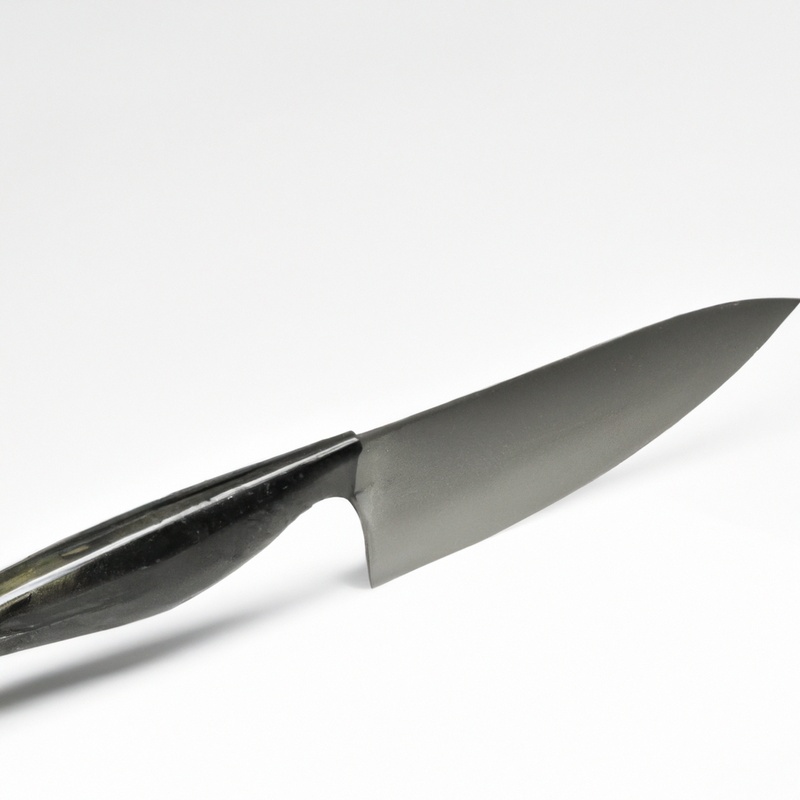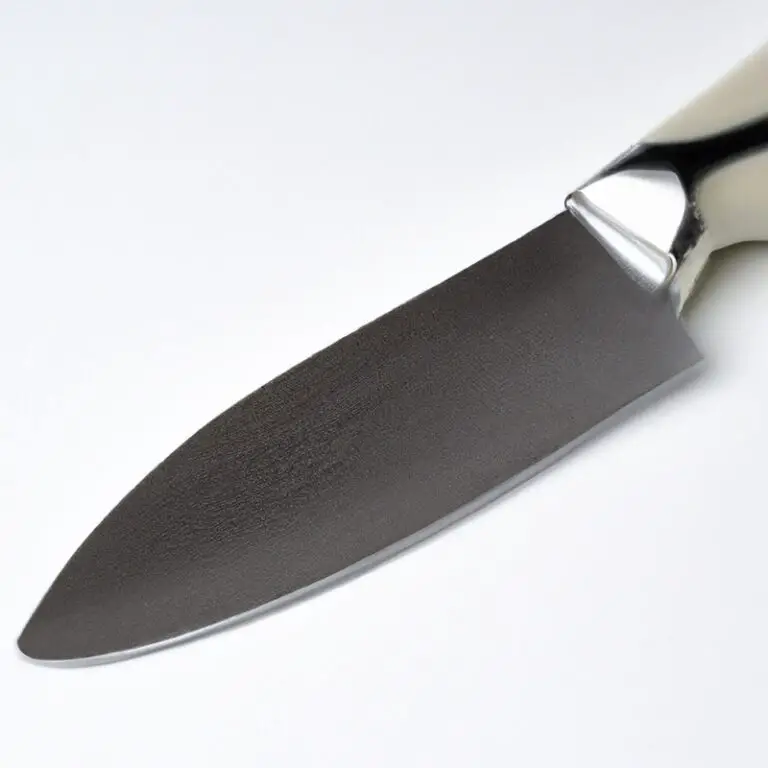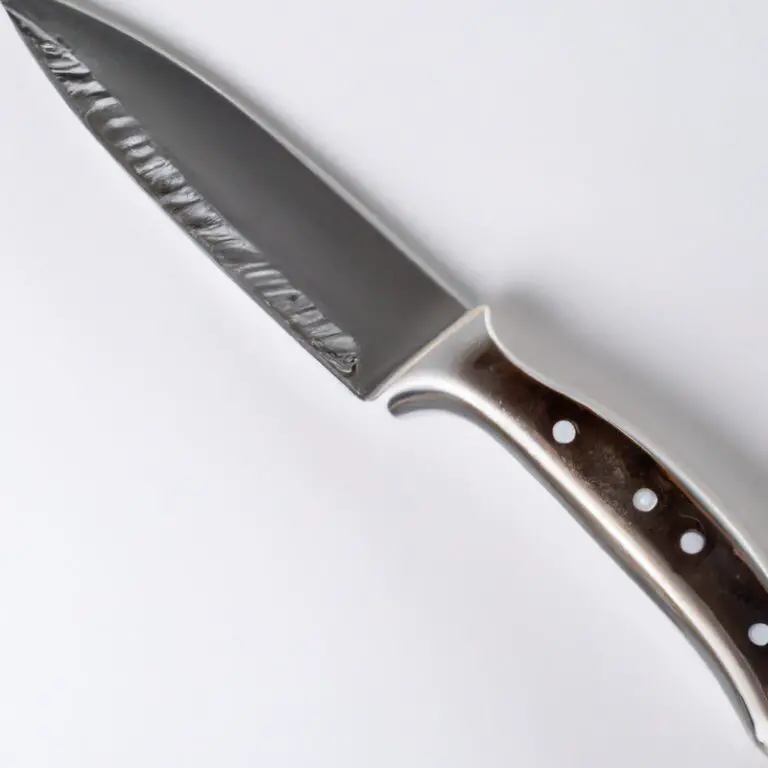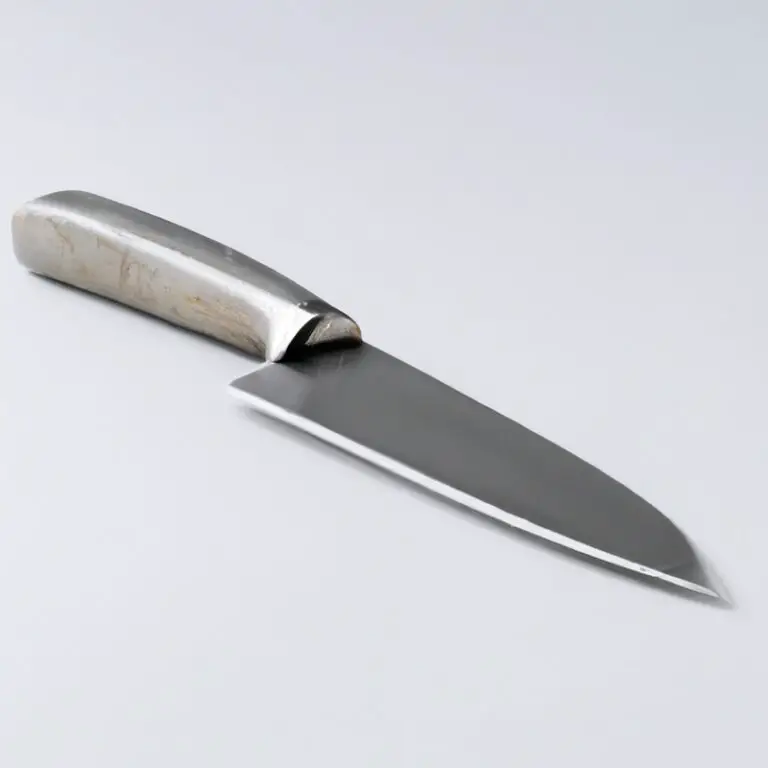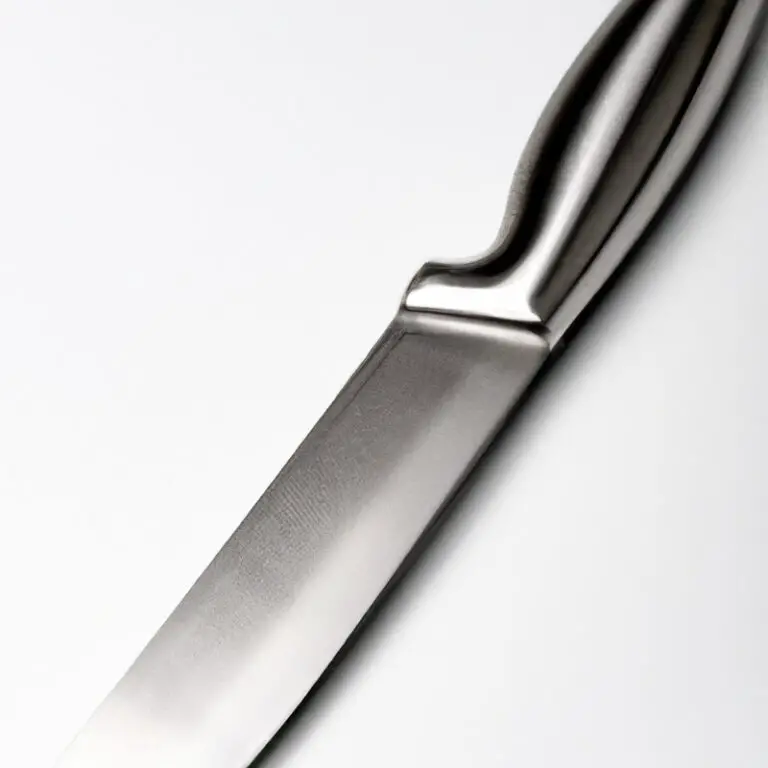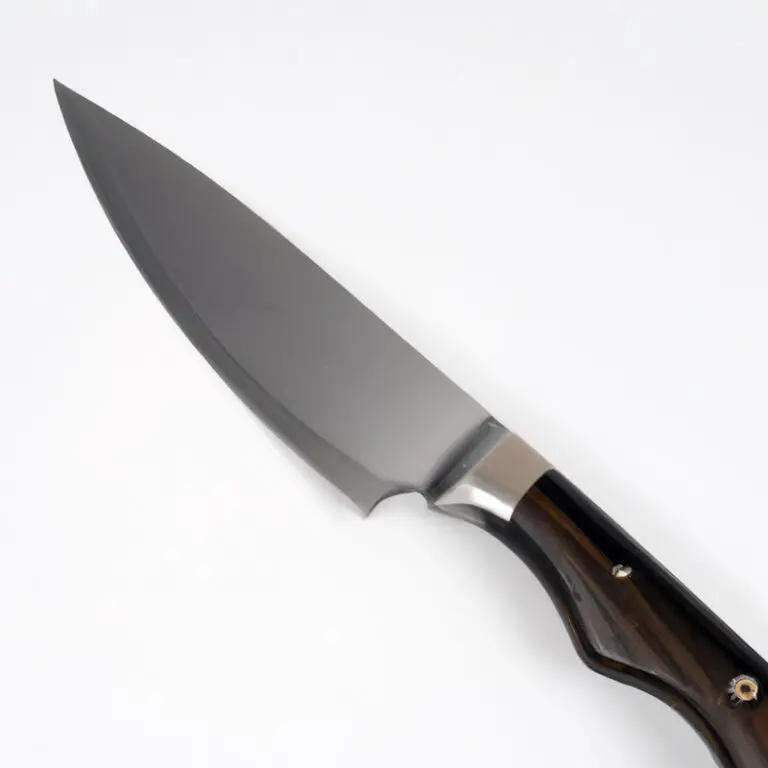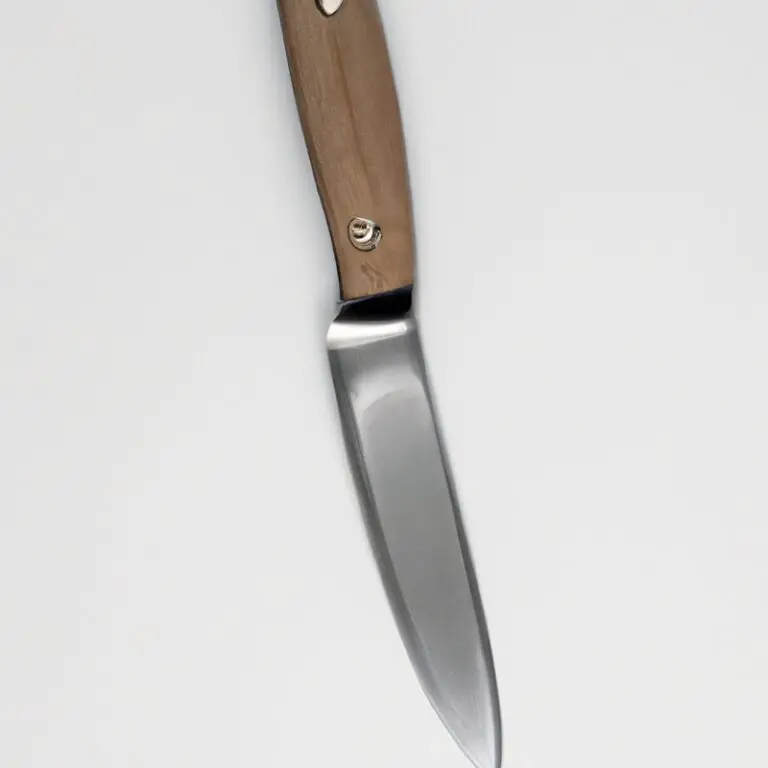How To Remove Paint Splatters From a Paring Knife Quickly
Key Takeaways:
- Removing paint splatters from a paring knife requires careful attention to avoid damaging the blade.
- Use a mixture of warm water, dish soap, and vinegar to dissolve the paint without harming the knife.
- A gentle scrub with a non-abrasive sponge can help loosen any remaining paint particles.
- Regular cleaning and maintenance can prevent future paint splatters and keep your paring knife in great condition.
Are you tired of seeing paint splatters on your paring knife? It’s frustrating, right?
Don’t worry, you’re not alone! Removing paint from a knife can be a daunting task, but with the right materials and techniques, you can restore your knife to its original look.
In this blog, I will share tips on removing paint from your knife, including assessing the paint type, gathering necessary cleaning materials, using solvent-based cleaners, and gentle scraping. So, let’s dive in and learn how to remove paint splatters from your paring knife!
| Solution | Process | Level of Difficulty |
|---|---|---|
| Use Vinegar | Dampen a cloth in vinegar and let it sit on the paint splatter for 5-10 minutes. Then, rub the spot gently with the cloth until the paint comes off. | Easy |
| Try Baking Soda Paste | Mix baking soda with warm water until it forms a paste. Apply the paste on the paint splatter and use a soft-bristled brush to scrub the area until the paint comes off. Rinse with warm water. | Moderate |
| Use Acetone or Nail Polish Remover | Soak a cotton ball in acetone or nail polish remover and apply it to the paint splatter. Let it sit for a few minutes and gently rub the area with a cloth until the paint is removed. Be sure to rinse the knife well after the process. | Difficult |
Assess the paint type
Before attempting to remove paint splatters from your paring knife, it’s important to assess the type of paint that has adhered to it. Different types of paints require different cleaning methods, and using the wrong technique may damage the knife’s surface.
First, determine whether the paint is water-based or oil-based.
Water-based paints are easier to remove and can be cleaned with soap and water, while oil-based paints require a solvent-based cleaner. If you’re unsure of the paint type, try using a bit of soap and water first.
If this doesn’t work, proceed with a solvent-based cleaner.
It’s also important to note that some paints contain harmful chemicals that require special handling. Always wear gloves and work in a well-ventilated area.
By assessing the paint type, you’ll be able to choose the appropriate cleaning method and safely remove the paint from your paring knife.
Gather necessary cleaning materials
To remove paint splatters from your paring knife, you will need to gather the following necessary cleaning materials:
- Solvent-based cleaner: A commercial solvent-based cleaner or mineral spirits can effectively remove paint from metal surfaces.
- Scraper tool: A plastic scraper tool or a toothbrush can be used to gently scrape off the paint from the knife.
- Soap and water: After removing the paint, clean the knife thoroughly with soap and water to remove any residue.
- Towel: Dry the knife with a towel to avoid any rust or water spots.
Having these cleaning materials on hand before starting the cleaning process will make the process smoother and more efficient. It is important to note that proper safety precautions must be taken when using chemicals, so make sure to read the label instructions carefully before using any solvent-based cleaner.
Apply a solvent-based cleaner
To remove paint splatters from your paring knife, you can apply a solvent-based cleaner. Solvent-based cleaners are effective in dissolving paint and can be found in most hardware or home improvement stores.
To use the cleaner, apply a small amount to the affected area of the knife and let it sit for a few minutes, according to the directions on the cleaner.
Then, using a soft cloth or paper towel, gently wipe the paint away. Be sure to wear gloves and work in a well-ventilated area when using solvent-based cleaners.
If the paint is particularly stubborn, you may need to repeat the process a few times until the paint is removed completely.
Once the paint is removed, clean the knife thoroughly with soap and water and dry it properly before storing it. Please note that using a solvent-based cleaner may damage certain types of materials, so make sure to read the label carefully and test the cleaner on a small, inconspicuous area of the knife before applying it to the paint splatters.
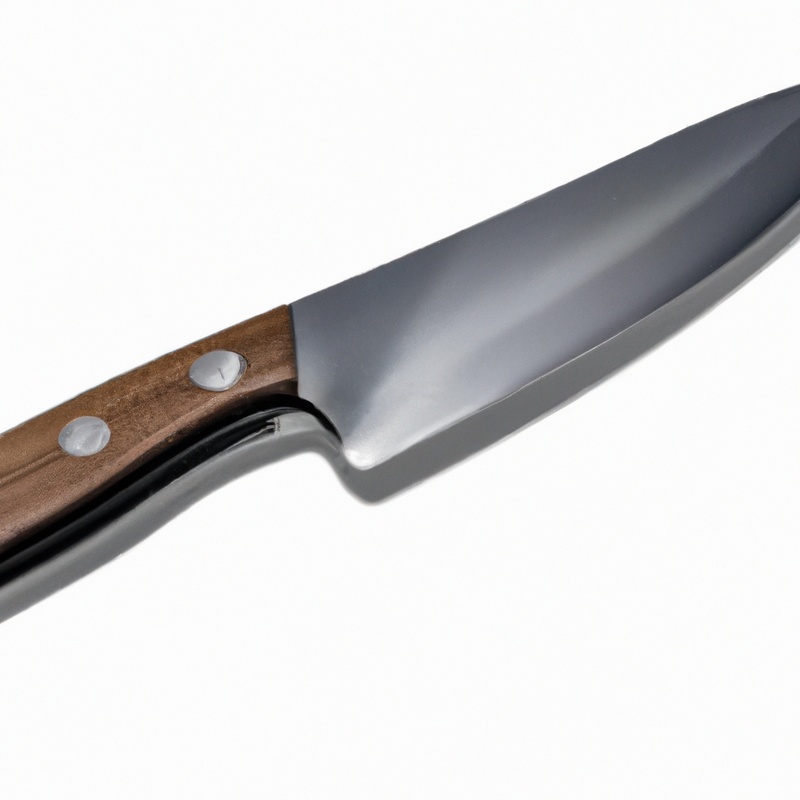
Gently scrape the paint from the knife
After applying a solvent-based cleaner to the paint splatters on your paring knife, gently scrape away the loosened paint using a plastic scraper or the back of a butter knife. Avoid using metal scrapers as they may scratch the surface of the knife blade.
Repeat the process of applying the solvent-based cleaner and scraping until all of the paint is removed.
Once you have removed all of the paint, clean the knife thoroughly with soap and water, dry it, and store it properly.
Repeat as necessary until paint is removed
Repeat the process of applying solvent-based cleaner and gently scraping the paint from the knife until all paint is removed. This may require multiple attempts depending on the amount and type of paint on the knife.
Be patient and avoid using excessive force, which can damage the knife’s blade or handle.
Once all paint is removed, clean the knife thoroughly with soap and water, then dry and store it properly. Remember to take preventative measures to avoid future paint splatters.
Clean knife thoroughly with soap and water
After successfully removing the paint splatters from your paring knife, it’s important to clean it thoroughly with soap and water. This helps to get rid of any residue from the solvent-based cleaner used earlier.
To clean the knife, use warm water and dish soap.
Gently rub the knife with a sponge or soft-bristled brush, paying close attention to the blade and handle. If there are any stubborn stains, apply a small amount of baking soda and continue scrubbing.
Once you’ve thoroughly cleaned the knife, rinse it in warm water and dry it with a clean towel.
Make sure to dry both the blade and handle properly to prevent rusting and damage. After drying, store the knife in a safe place, preferably in a knife block or a drawer with a dedicated slot for knives.
Avoid placing it near any chemicals or liquids that may damage the blade.
Remember that keeping your knife clean is important for maintaining its sharpness, durability, and hygiene. A dirty knife can harbor harmful bacteria that can cause food contamination and infection.
So, make it a habit to clean your knife regularly after each use, particularly if you’re using it to handle different types of food, or if there’s a chance it might come into contact with any chemicals or substances that could damage it.
Dry knife and store properly
After cleaning your paring knife, it is essential to dry it thoroughly before storing it. A wet or damp knife can lead to rust and corrosion, which can damage the blade and affect its sharpness.
To dry the knife, wipe it down with a clean, dry cloth, making sure to remove any remaining moisture.
You can also place the knife in a dish rack to air dry completely. Once the knife is dry, store it properly in a knife block or sheath to protect the blade and prevent any accidental injury.
Never store a knife in a drawer without proper protection, as this can cause damage, dulling, or injury.
Take preventative measures to avoid future paint splatters
To avoid future paint splatters on your paring knife, ensure proper preparation before any painting project. Cover the surrounding surfaces with old newspapers or drop cloths, and always wear protective gloves, clothing, and eyewear.
Properly seal and cover paint cans to prevent spills and splatters.
Use a high-quality paintbrush and technique to prevent drips and runs. Taking preventative measures will save you time and frustration in the long run.
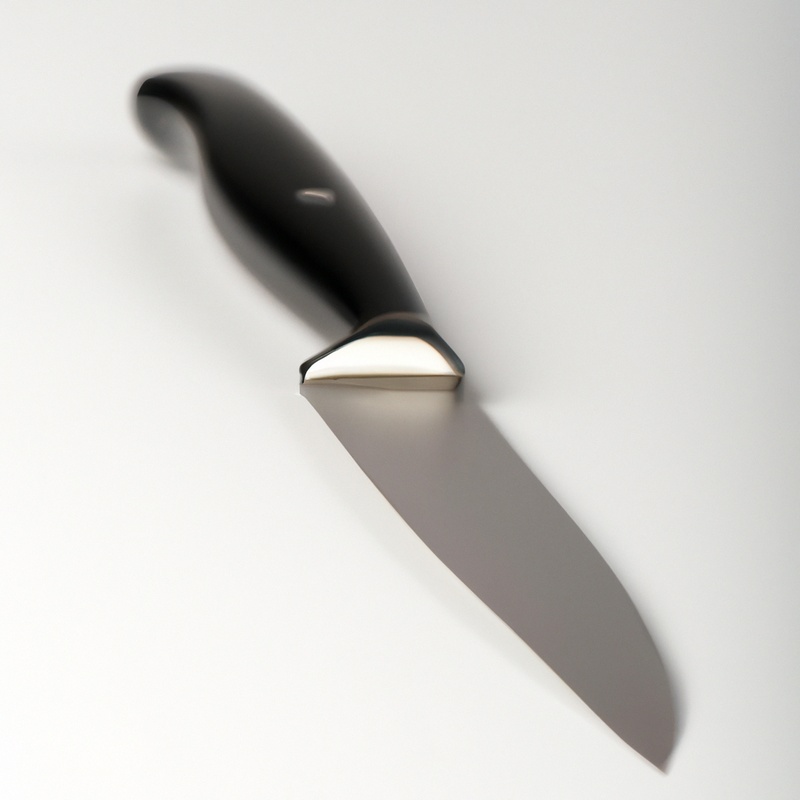
Final Verdict
Removing paint splatters from a paring knife may seem daunting, but with the right approach, it can be easily achieved. As we have discussed, assessing the paint type, gathering necessary materials, and applying a solvent-based cleaner are key steps in the process.
Gentle scraping and repeated cleaning will eventually leave your knife paint-free.
Remember to clean and store your knife properly, and take preventative measures to avoid future splatters. By following these guidelines, you can restore the functionality of your paring knife and maintain its quality for years to come.
Thank you for trusting our expertise, and happy cleaning!

